Malta National Museum of Archaeology
This is my third post from Malta’s capital city and World Heritage Site, Valletta. Alison and I are in Malta with a small Adventures Abroad group led by the indomitable Victor Romagnoli. We began our exploration of Valletta on foot with local guide Chantelle Shaw and Victor by visiting a number of the city’s 320 monuments of note including the Armoury in the Grandmaster’s Palace. On a second visit we had an extensive tour of one of Europe’s greatest baroque churches, St. John’s Co-Cathedral where we saw two of Caravaggio’s most important works. In this post we’ll continue our walking tour by visiting the Malta National Museum of Archaeology and other sites before concluding our visit with the firing of the four o’clock gun at Upper Barrakka Gardens. Please join us on what promises to be a very interesting afternoon.
Napoleon in Malta
The Malta National Museum of Archaeology is just down Republic Street from the cathedral, but before getting there I noticed this plaque and that led to researching some interesting facts about Napoleon and how he changed Maltese history.
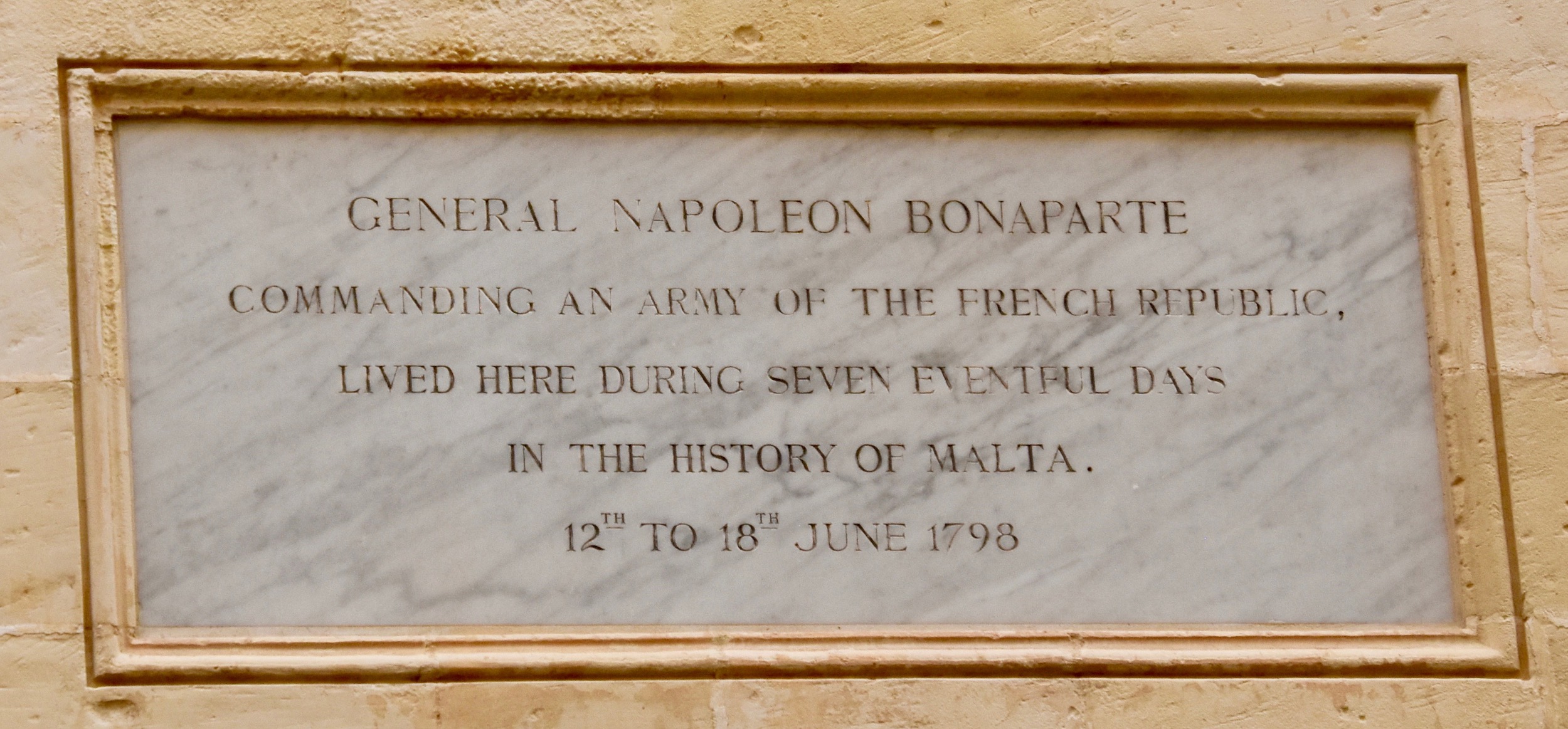
In 1798 Napoleon was leading a French revolutionary army to Egypt, but decided to stop at Malta on the way. Actually, being the ego maniac he was, conquering Malta in the pseudo guise of ‘liberté, égalatié, fraternité’ was his real aim. The Knights of St. John were still running the place some 268 years after first arriving and mostly being aristocrats, were fair game to the Jacobin spirit of the French revolution. Now a lot of the Knights were Frenchmen by birth and not too anxious to get into a battle with their fellow countrymen, so a peaceful surrender was arranged. Napoleon then promptly disbanded the order, looted many of their prize possessions including possibly that arm of St. John the Baptist we didn’t see in the last post. So in only seven days Napoleon did more harm to the Knights of St. John then the Muslims had been able to do in over seven centuries.
Not surprisingly, resentment against the French ran very high in Malta and they held it for only two years before the British took over and ran Malta for the next 164 years until independence. The things you can learn from looking at a simple plaque.
Malta National Museum of Archaeology
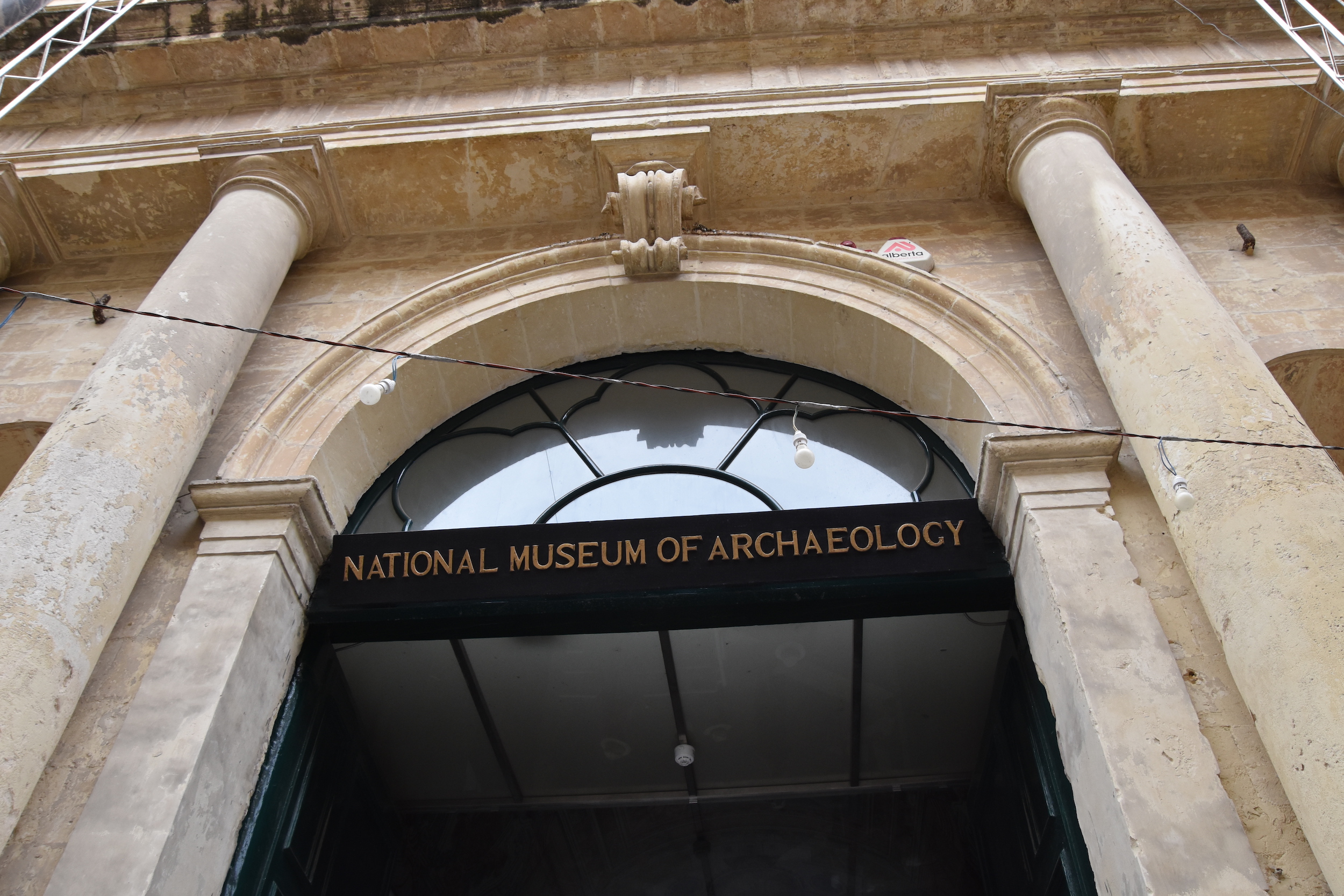
The Malta National Museum of Archaeology is located in the former Auberge of Provence on Republic Street in Valletta, one of five surviving auberges in Valletta. However, it is the only auberge that survives in its original form as designed by architect Giralamo Cassar who was commissioned to design all eight of the auberges in the city of Valletta after the Great Siege of 1565. We have already seen his work at St. John’s Co-Cathedral and the Grandmaster’s Palace. Although not housing any artefacts, you can take a detour and see the former refectory of the auberge where the knights took their communal meals. This photo is from the museum’s website and is much better than the one I took.
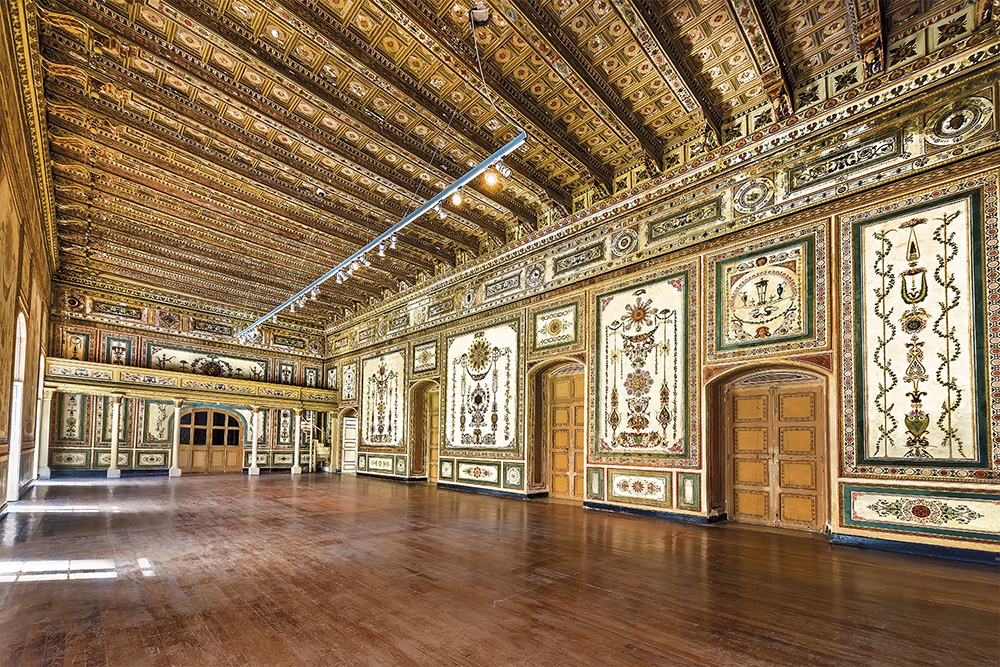
After the Knights of St. John were disbanded by Napoleon and Great Britain took over Malta in 1800, it was the headquarters of the Union Club which had Sir Walter Scott, Benjamin Disraeli and King George V as members. They used this Grand Salon as a ballroom until 1955. In 1958 the auberge was reopened as the Malta National Museum and since 1974 as the Malta National Archaeology Museum.
You might ask yourself, how can a country as small as Malta have much in the way of an archaeological history? Well the answer might surprise you – Malta is home to some of the earliest and most important archaeological sites on the planet. Visiting some of these sites was a major reason I signed up for this trip. The Malta National Museum of Archaeology is the natural place to begin to get an understanding of where these sites are and why they are important in understanding the early neolithic period of world history.
The museum is divided into three distinct periods, the Neolithic, the Bronze Age and the Phoenician era. Nothing here is newer than 2500 years old.
This is the oldest artefact in the Malta National Museum of Archaeology and dates from 5,200 B.C.. That’s over 7,000 years ago. What else was happening around this time? Well there was no known system of writing invented yet. The civilization that grew up around the Fertile Crescent in modern day Iraq was still 1,000 years in the future. Horses and chickens were still undomesticated. The Bronze Age would not start for another 1,700 years. You get the picture – this representation of some type of animal is incredibly old. It comes from a site called Ghar Dalam which is a cave on the eastern side of Malta. Although we will not visit it on this trip, it is a place of surpassing interest. In it are six distinct layers of siltation that date back over 500,000 years, long before any humans reached the island. In these layers are the remains of extinct species of dwarf elephants, hippopotami and other creatures that you would never have thought could exist on Malta, yet they did.
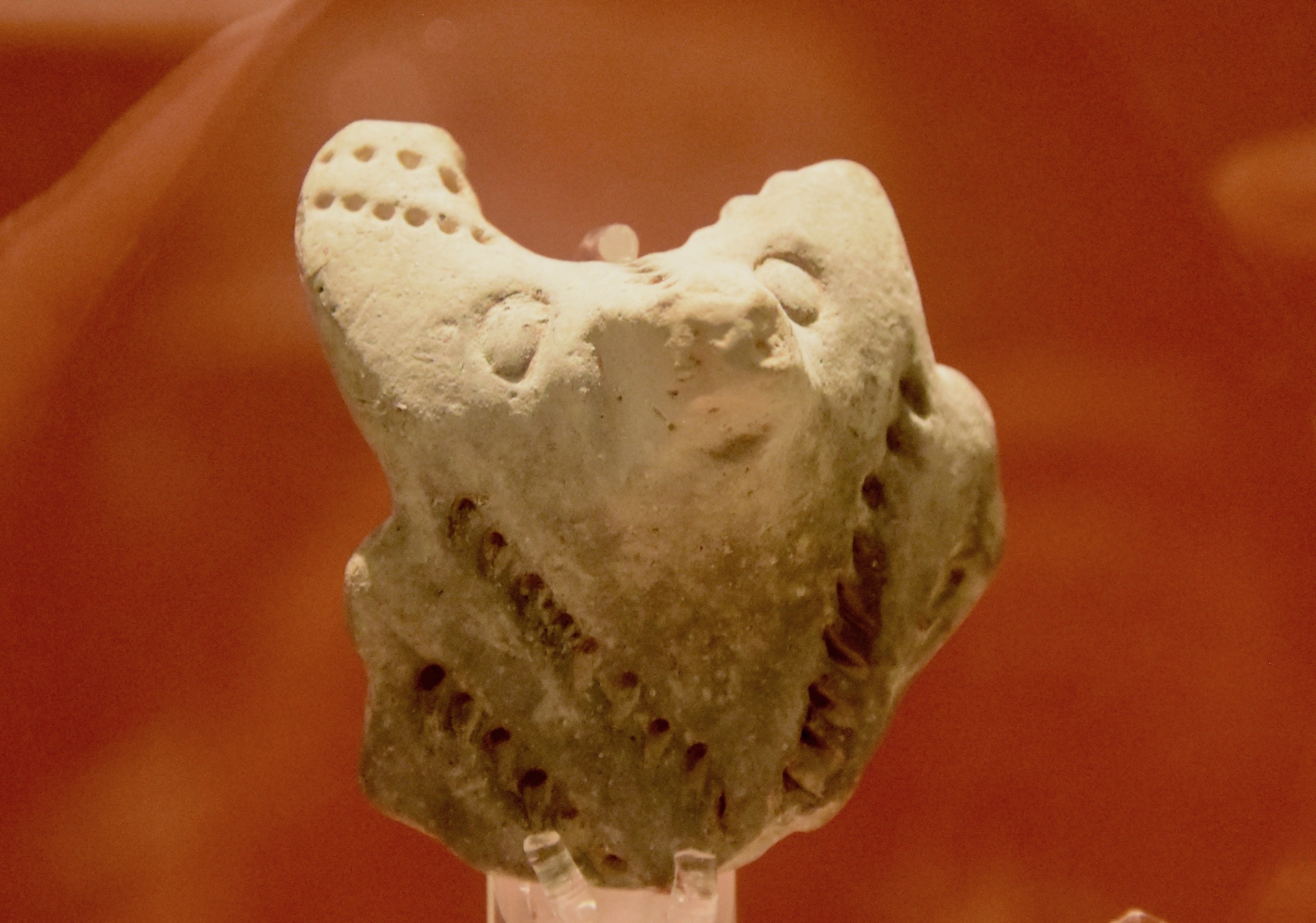
Ghar Dalam is the oldest known archaeological site on Malta and provides evidence that people were farming here thousands of years before other civilizations like the Minoans or the Egyptians sprang up around the Mediterranean.
Malta has seven distinct archaeological sites that are collectively known as the Megalithic Temples of Malta that have been designated as a UNESCO World Heritage Site. We will be visiting several of them later on this trip. Many of the most important artefacts in the Malta National Museum of Archaeology have been found at these temples. This is one of a number of red clay statuettes from the oldest Megalithic site, Skorba. Dating to between 4400 and 4100 BC it is the oldest representation of a human figure ever found on Malta.
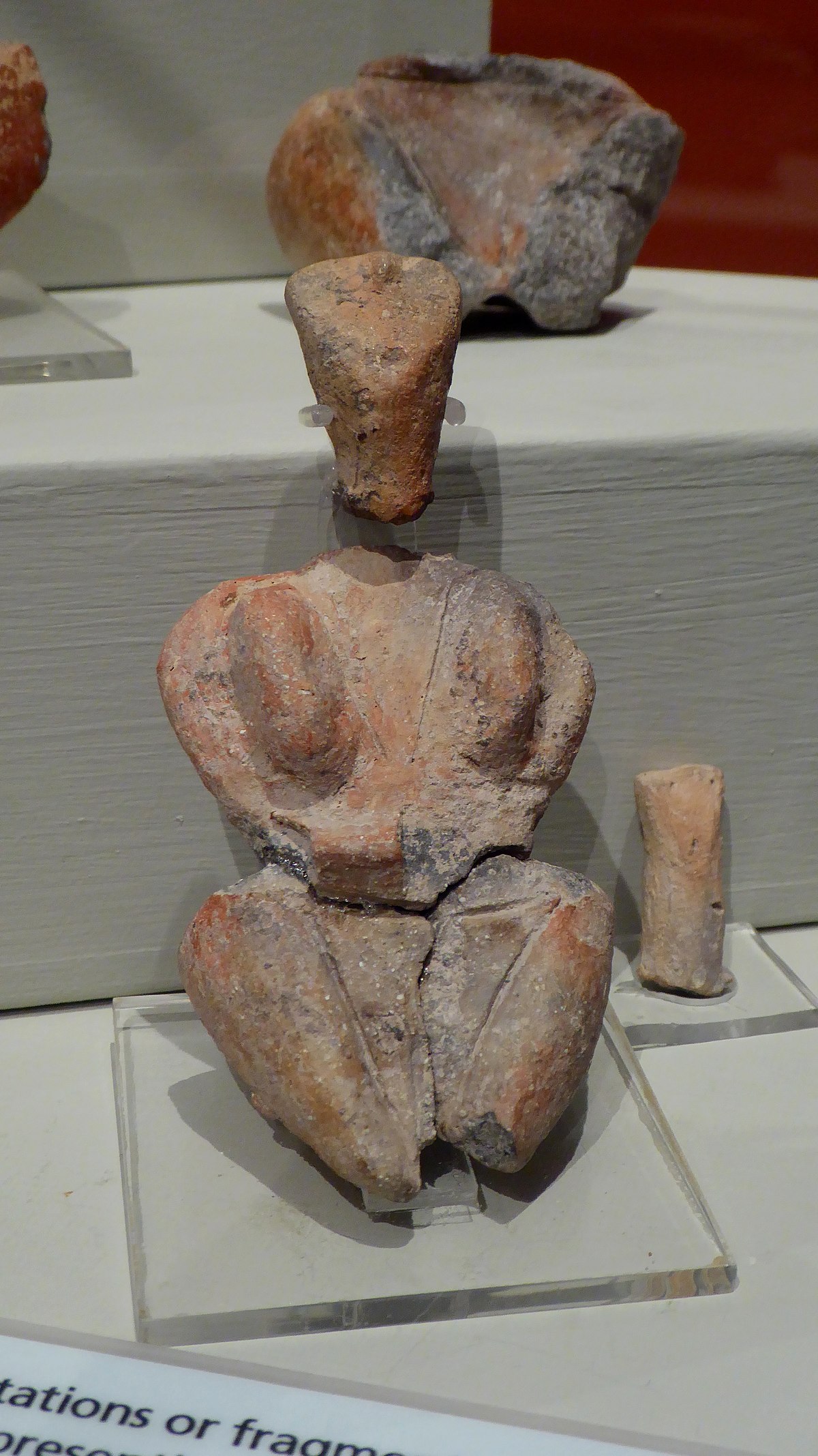
Next we fast forward over a thousand years to view the Venus of Malta which was found at the Megalithic temple Hagar Qim which we will visit in the next post. It dates to between 3600 – 2500BC and differs from much earlier palaeolithic ‘Venuses’ found elsewhere in Europe that were carved from stone. This object was made from fired clay and then polished, confirming that significant technological advances were being made in the late neolithic period.
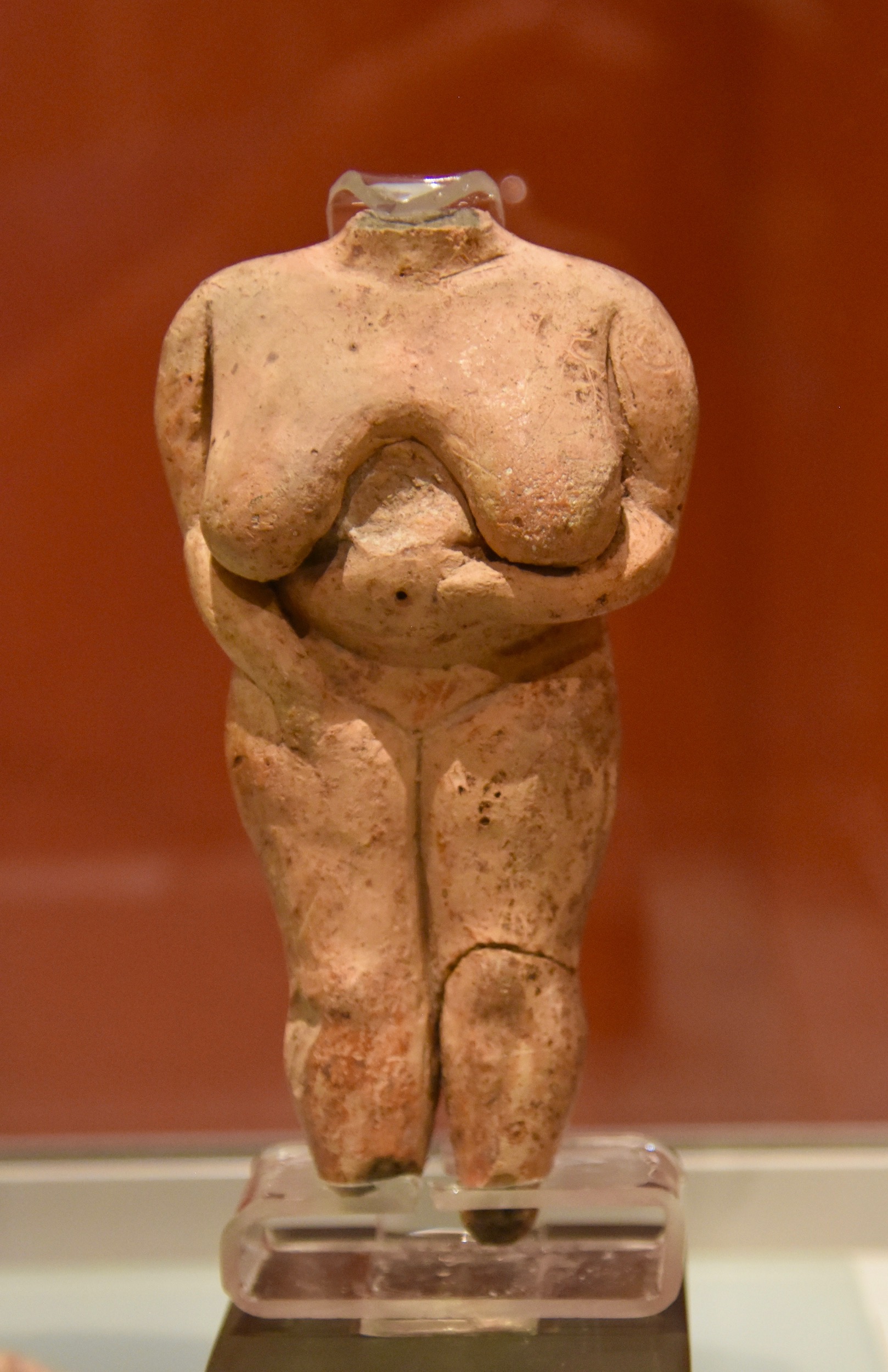
I suppose some people might be thinking “What’s the big deal with these two statues? There’s lots of better examples from later periods.” True, but do you think they will still be around 6,000 years from now?
There are several other objects from Hagar Qim in the Malta National Museum of Archaeology that are extraordinary. They depict grossly obese figures that for many decades were thought to represent female forms, but are now considered asexual – they could be either sex. Nobody knows for sure. In many societies, including parts of Polynesia today, obesity is considered a sign of abundance and fecundity so it is posited that these figures might represent good times in ancient Malta. It’s hard to imagine however how a real person could get this fat without any McDonald’s franchises to help them.
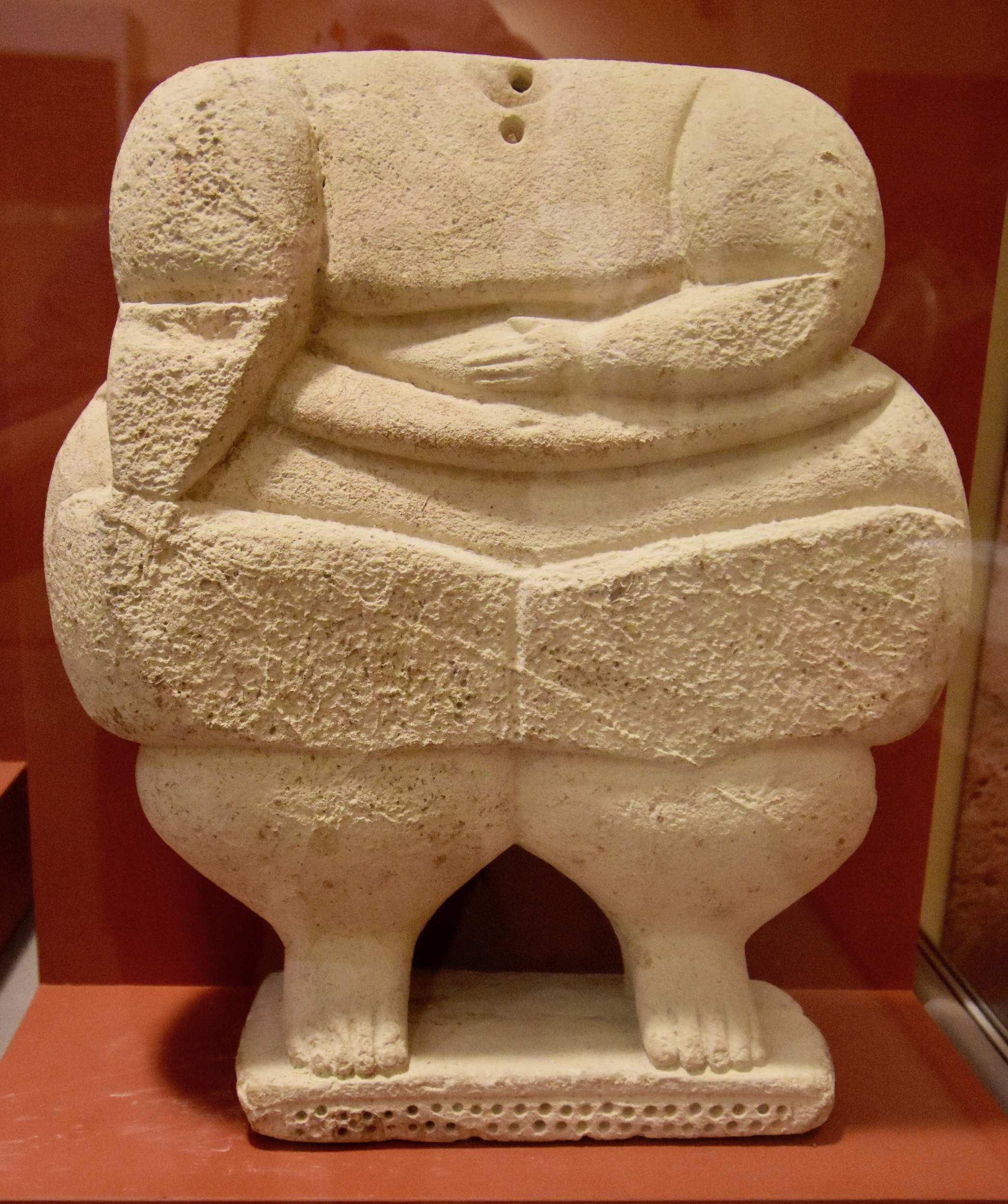
Without doubt the most famous item in the Malta National Museum of Archaeology is the Sleeping Lady of Malta, one of the most enigmatic finds in the entire Neolithic pantheon.
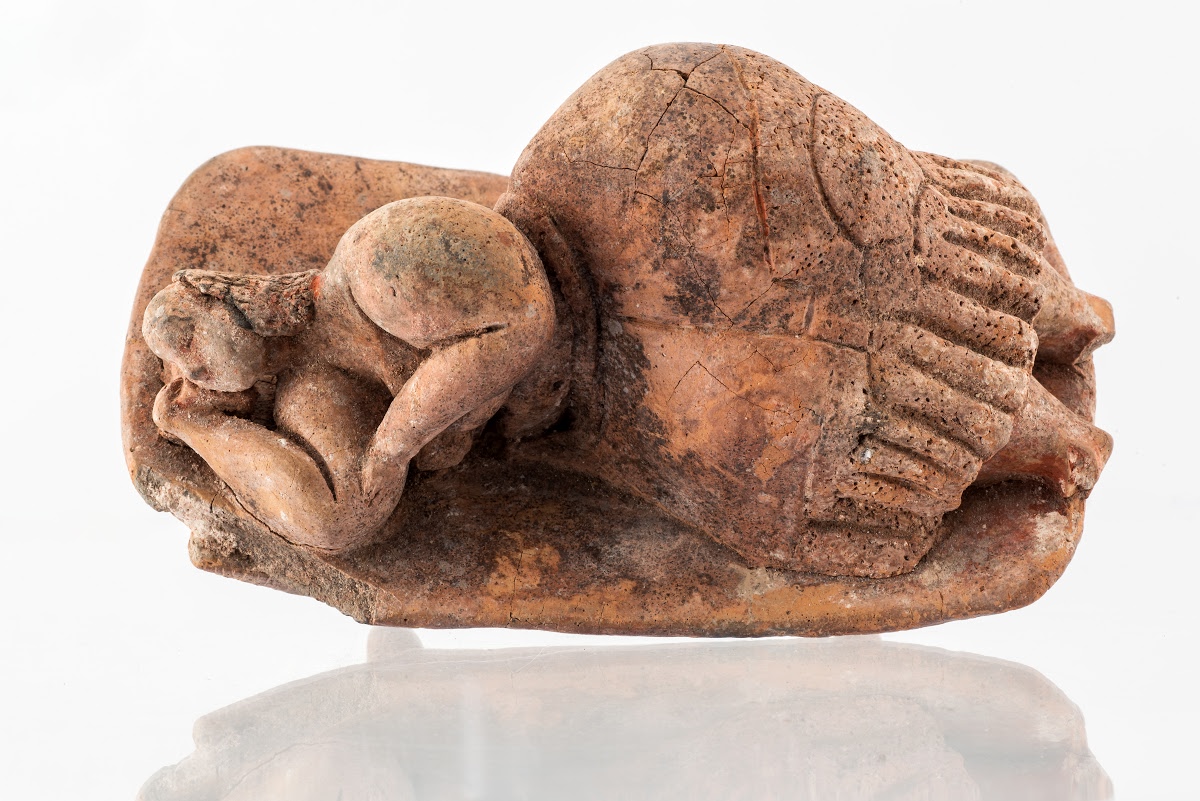
This object was found at the most unique of Malta’s neolithic monuments, the Hal Saflieni Hypogeum which is not too far from Valletta. It is essentially an underground cemetery which was in use from 4000 to 1500 BC and contained the remains of over 7,000 individuals. Discovered by accident in 1902, there is nothing else like it on the planet. Unfortunately, uncontrolled visitation from 1908 to 1990 caused serious damage to the structures and the red ochre wall paintings inside. The site has been closed on a number of occasions to install state of the art protective systems to prevent further damage. Today the site is limited to ten visitors an hour and before Covid you had to book months in advance to get a ticket. Aside from the small island of Comino, this was the only place on the top 10 list of Malta sites that we did not get to. I can understand that given the uncertainty as to the size of the group. Hopefully, with more advance notice the Hypogeum will make it on the itinerary. In the meantime I can offer the reader this virtual tour which is the next best thing.
Back to the Sleeping Lady, she’s actually quite tiny (no pun intended), only 12cm. (just under 5 inches). Just as with the Hagar Qim objects, there is no consensus on what she represents, but to steal from Freud, sometimes a sleeping lady is just a sleeping lady.
This is a different form of decorative art dating from the final period of Megalithic temple building in Malta from 3150 to 2500 BC. It shows three fish on a stone block and was found at the small temple at Bugidda which is now part of the grounds of a modern hotel.
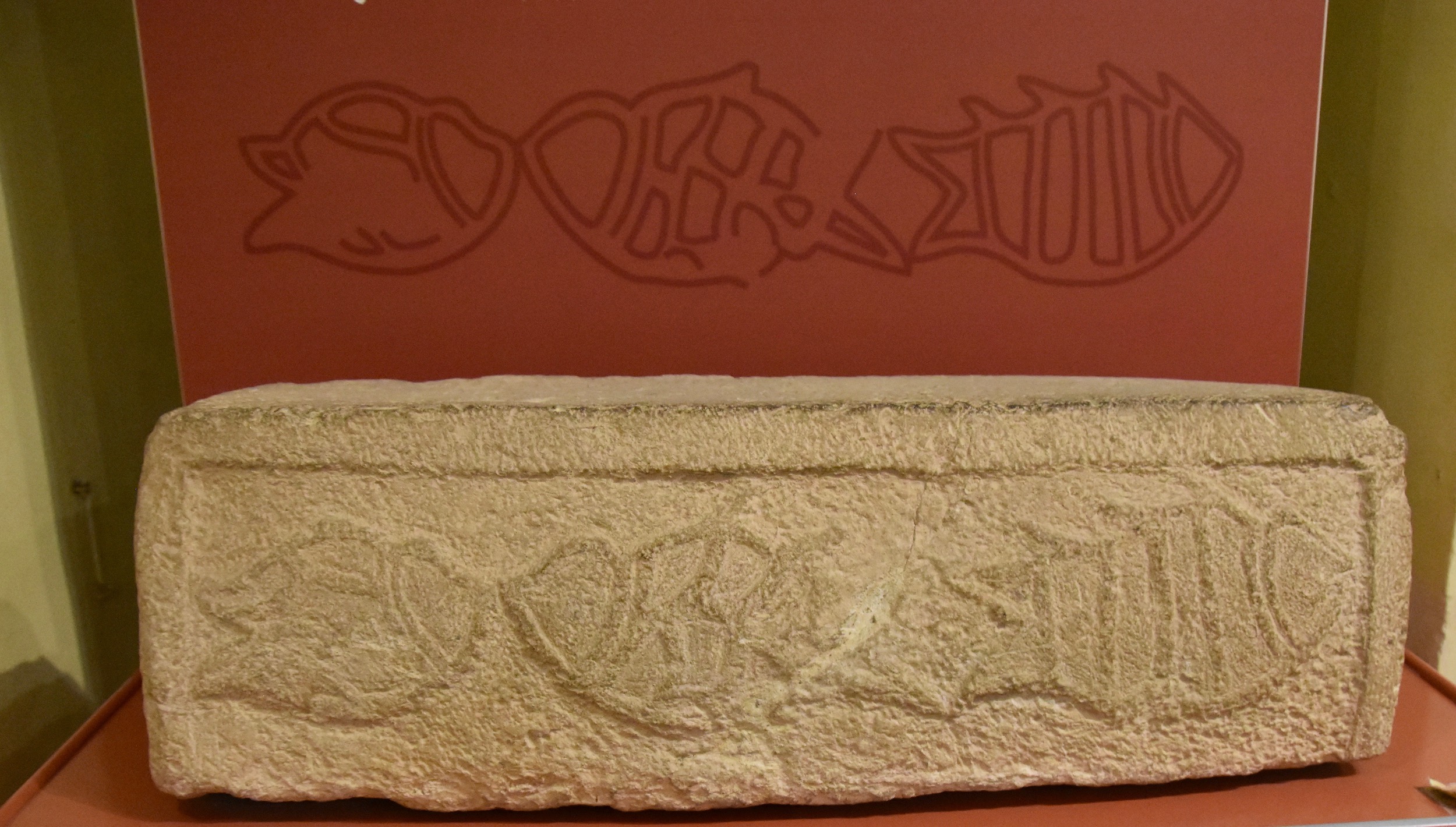
No visit to an ancient museum would be complete without checking out the phallic symbols.
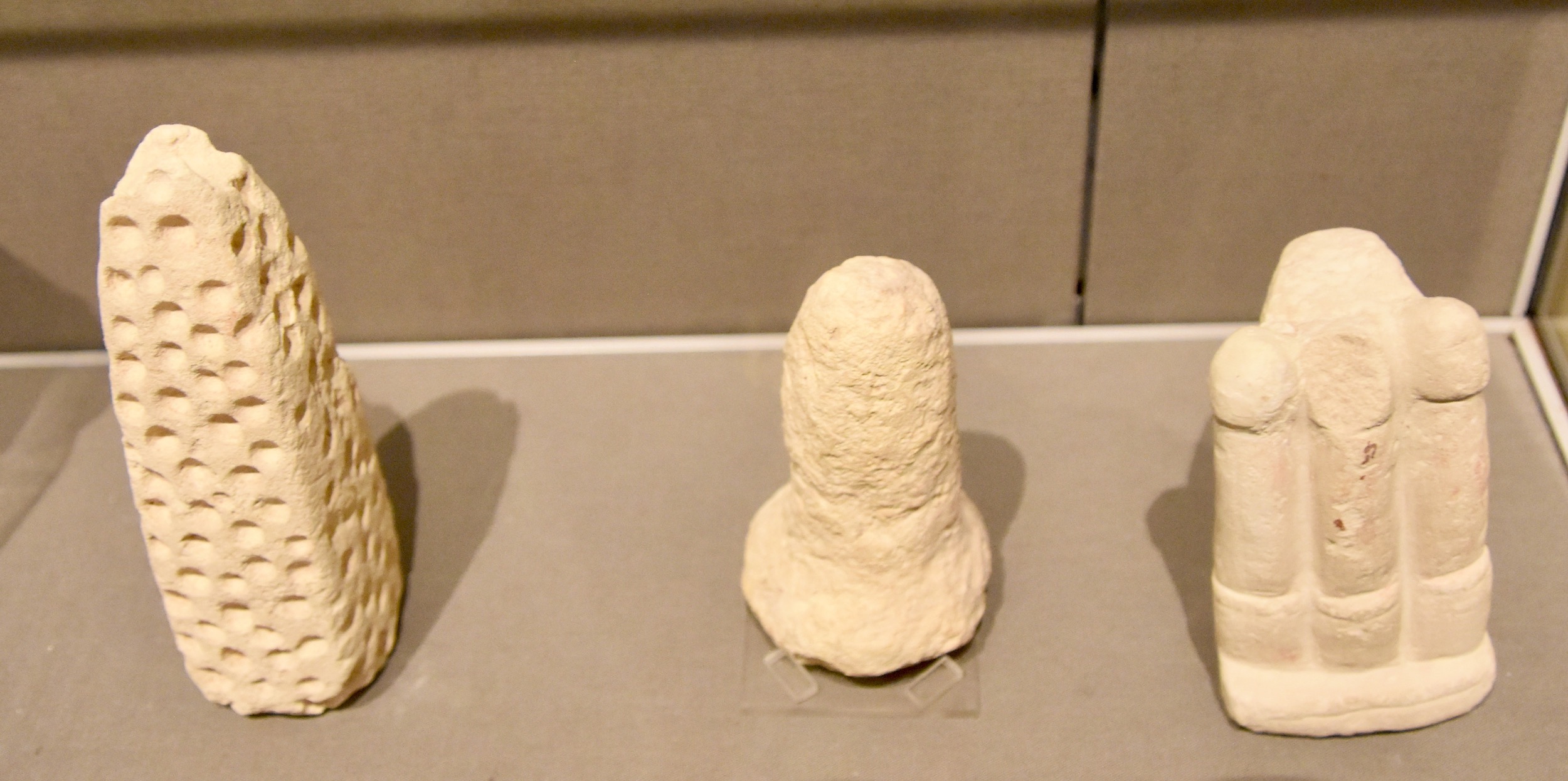
The one on the right reminded me more of the Space Shuttle than anything else and as it turns out the subject of space travel and aliens was the topic of a special exhibit. Alien Headaches? The Hypogeum Skulls Enigma was a display of deformed skulls found in the Hypogeum that some nuts have claimed to be of space invaders. The exhibit very clearly demonstrated that they are nothing that cannot be explained by modern science and medicine.
The last artefact I found really interesting was one of the newer items in the Malta National Museum of Archaeology. At only 2500 years old this Phoenician sarcophagus is a relative newcomer to Malta. The Phoenicians were in Malta from roughly 700 to 200 BC until the Romans took over. They are one of the least understood of ancient peoples, having spread out from their Levant homeland in modern day Lebanon throughout the Mediterranean and even as far as Great Britain. Their titanic struggle with the Romans in the Punic Wars from their main colony of Carthage in North Africa ended in their almost total obliteration from history. The Phoenician gallery is not very large, but does contain some very rare artefacts like this intact sarcophagus that was found in a rock cut tomb in 1797.
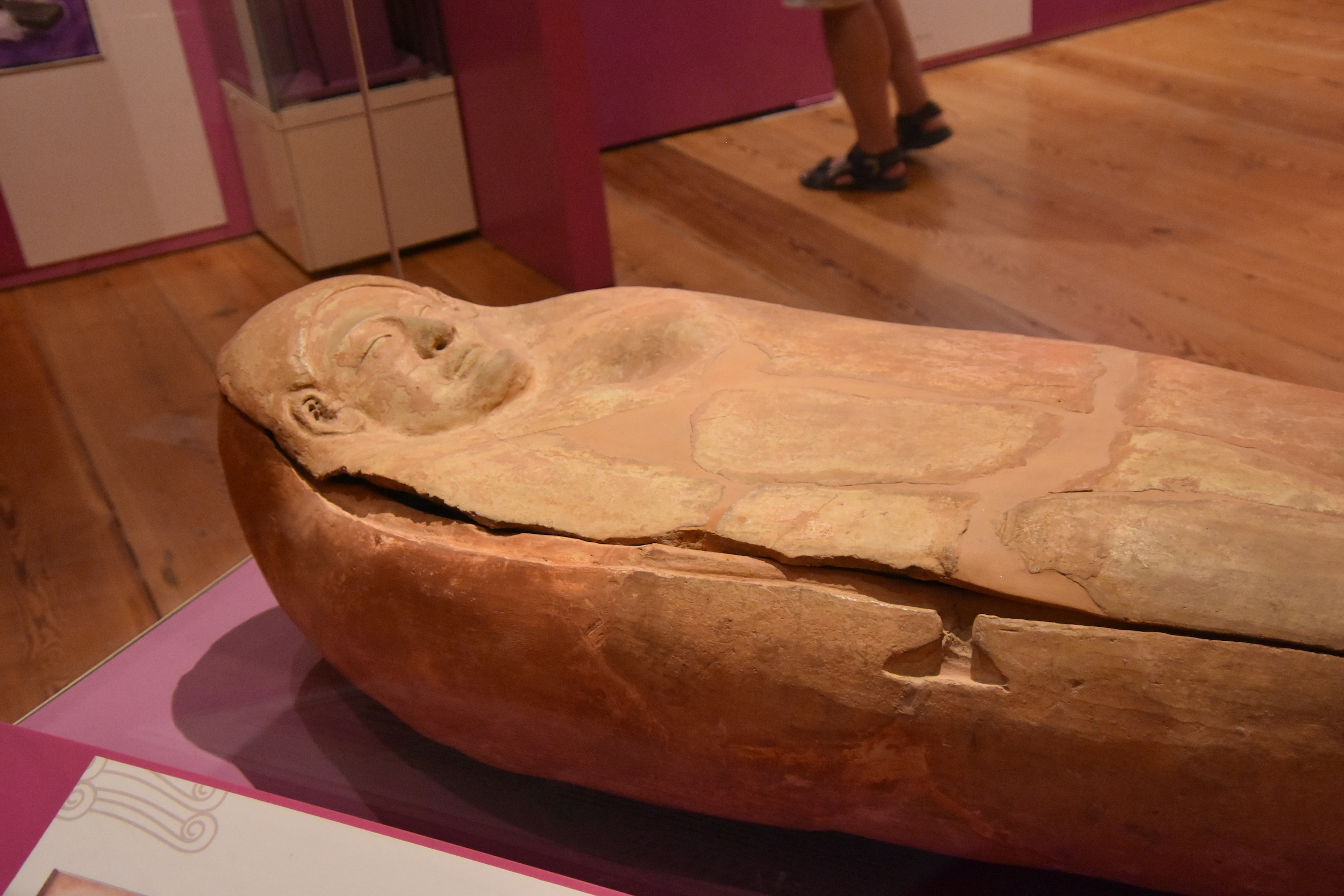
While that concludes out visit to the Malta National Museum of Archaeology our group still has a few things to see in Valletta. Chantelle and Victor take us to Upper Barrakka Gardens passing the Auberge de Castille along the way which now houses the offices of the Prime Minister of Malta. That’s our group in front with one very big policeman passing by.
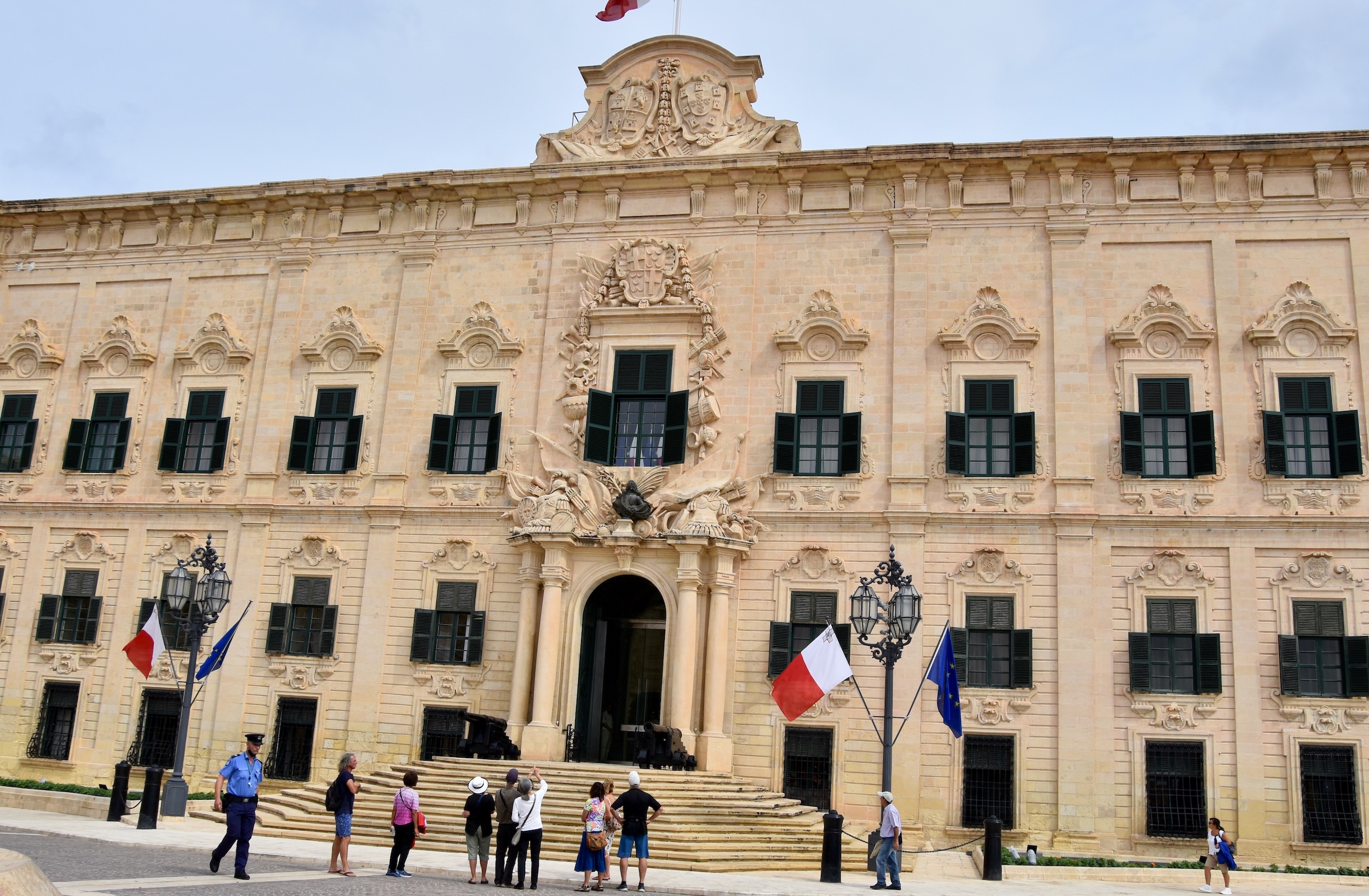
The Upper Barrakka Gardens are one of the best places to get fantastic views of Grand Harbour.
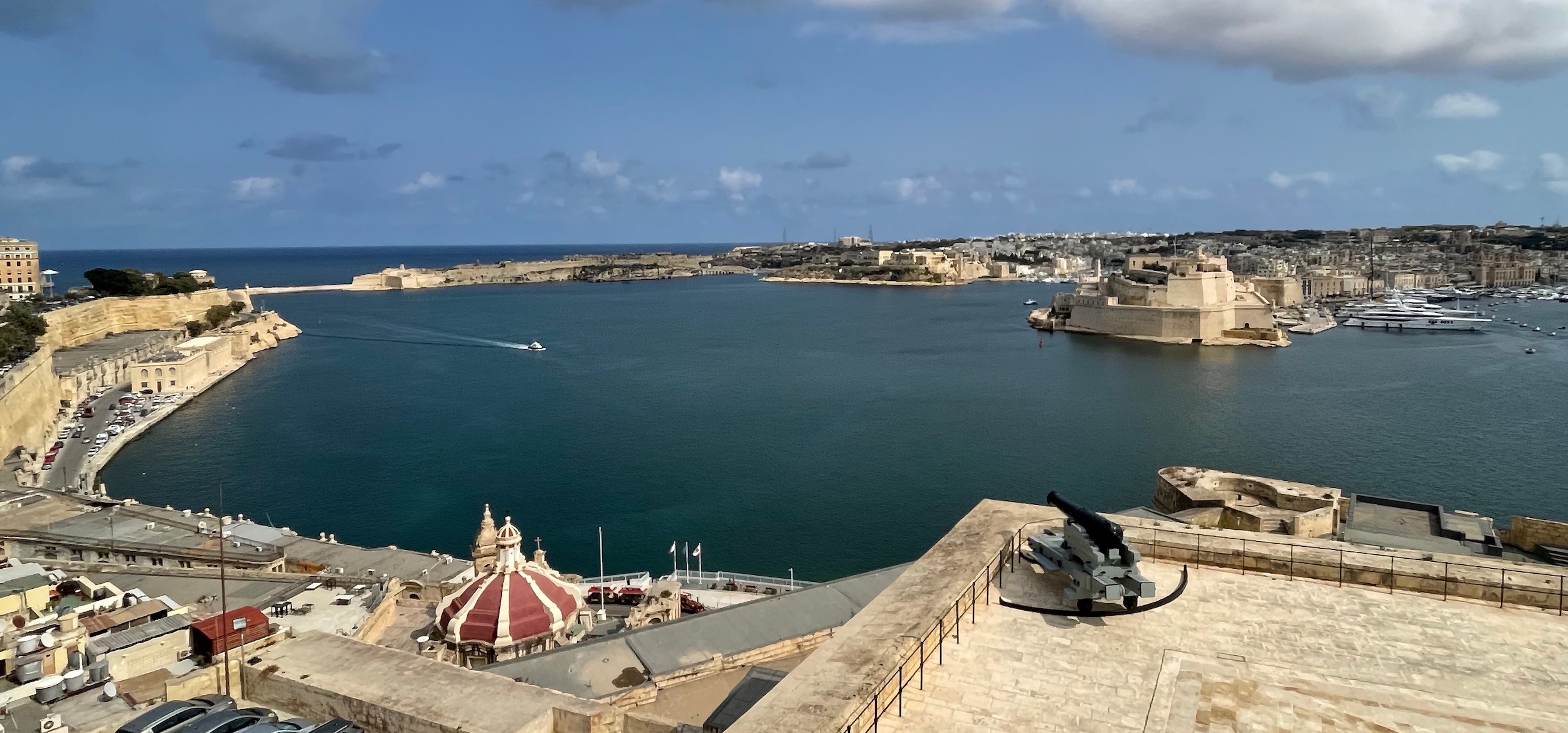
And Fort St. Angelo. That’s the one Caravaggio escaped from.
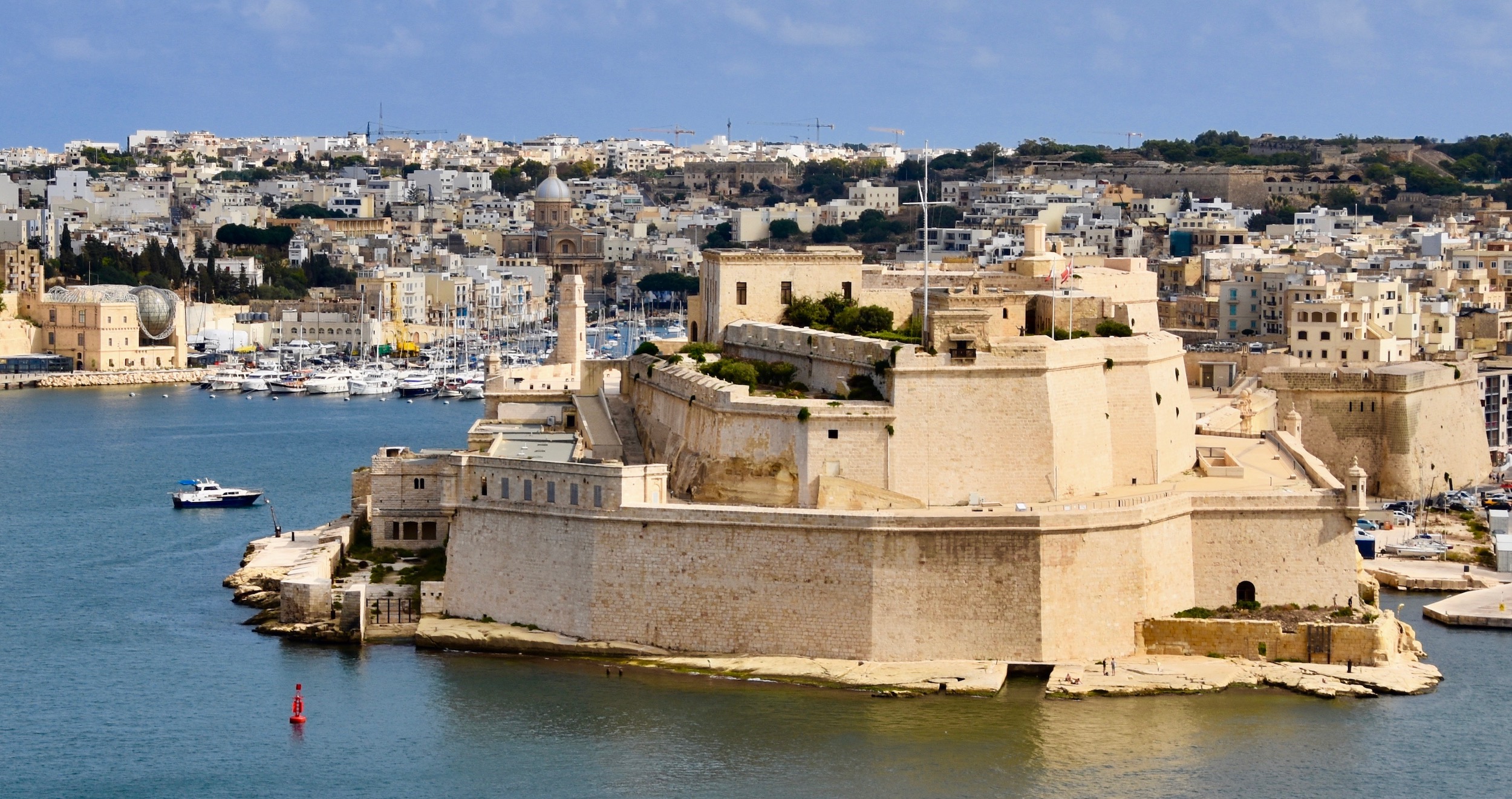
It is also the place where people gather at noon and 4:00 PM for the firing of the Saluting Battery cannon, a tradition that goes back to 1824. Originally used by the Royal Navy as a method of coordinating ship’s clocks, it is now purely ceremonial and even in these Covid depleted tourism times, there was quite a crowd on hand. BTW the cruise ship in the background was not a visiting ship, but in the Malta shipyard for repairs.
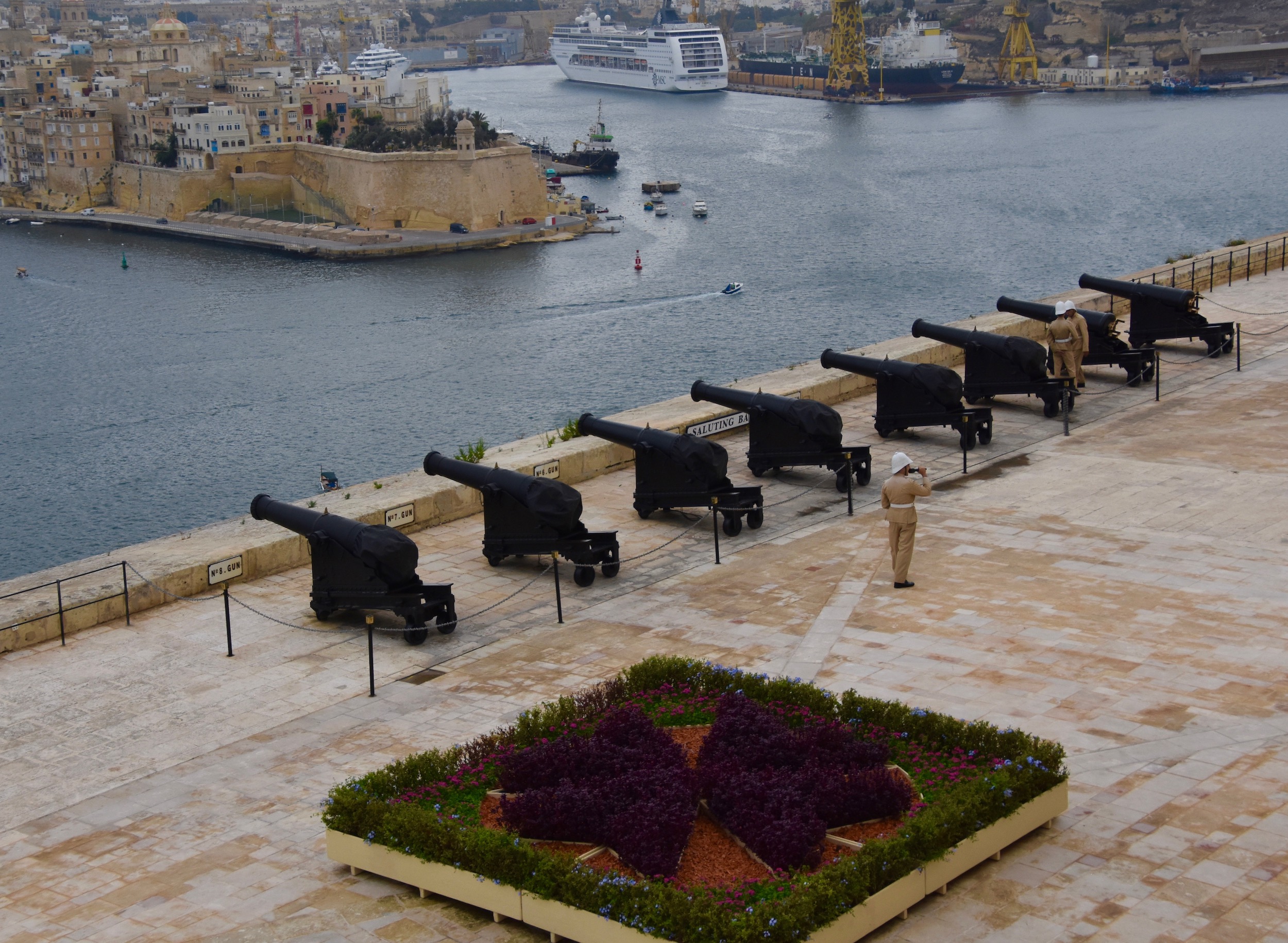
I’ll end this post with a little known, but extremely important fact about Valletta – this is where the Cold War ended when on December 2 and 3rd, 1989 President Bush and Mikhail Gorbachev met here and ceased over forty years of nuclear brinkmanship.
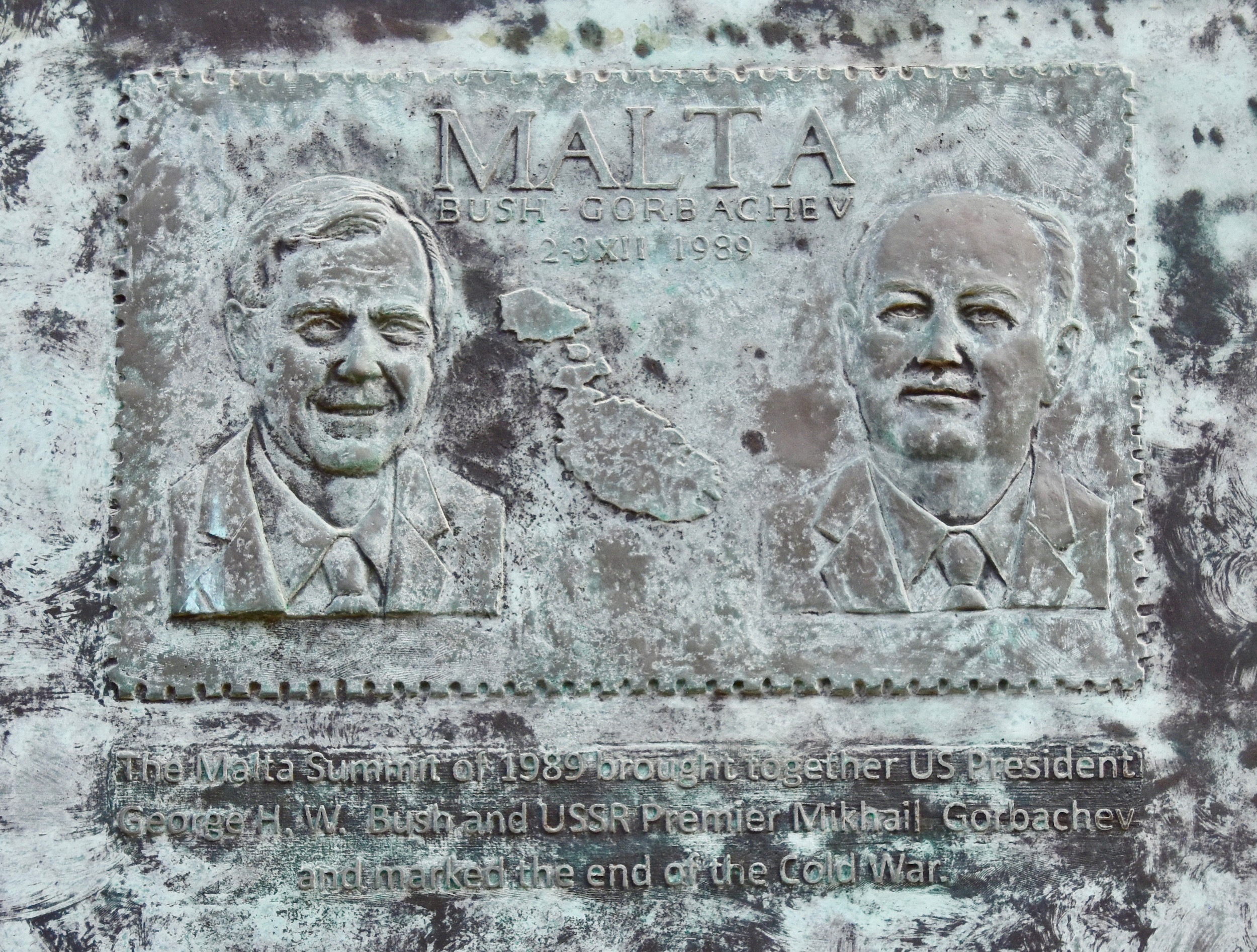
In the next post our group will hit the road and travel to the important neolithic temple at Hagar Qim. Please join us there.

